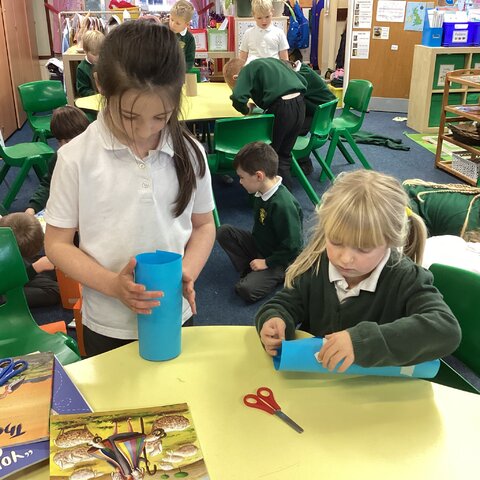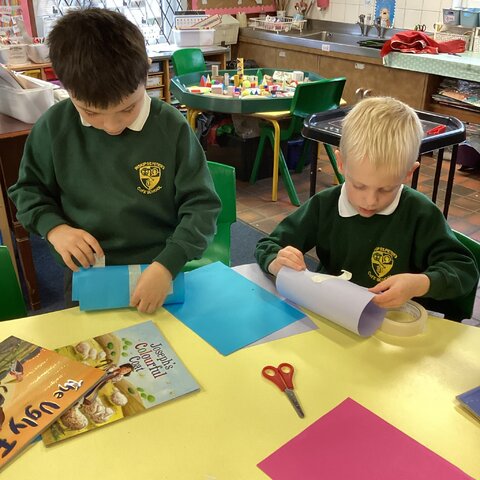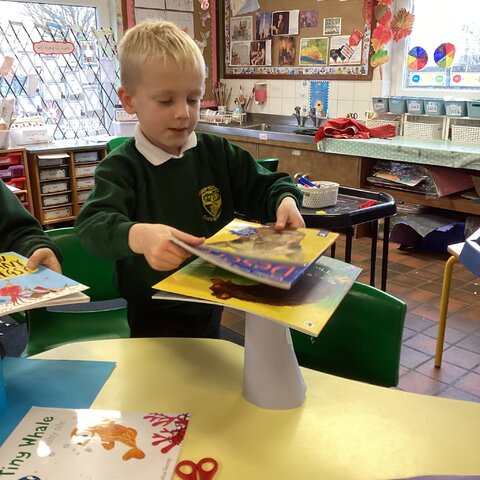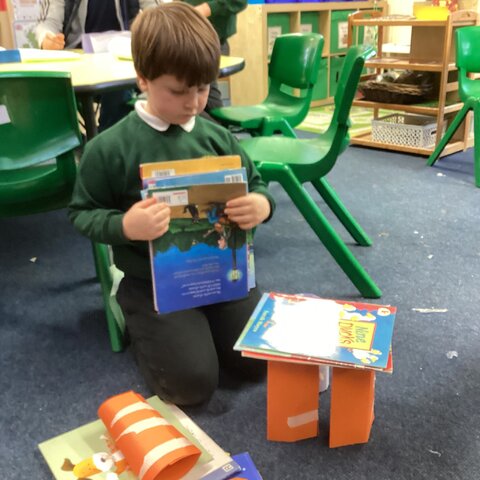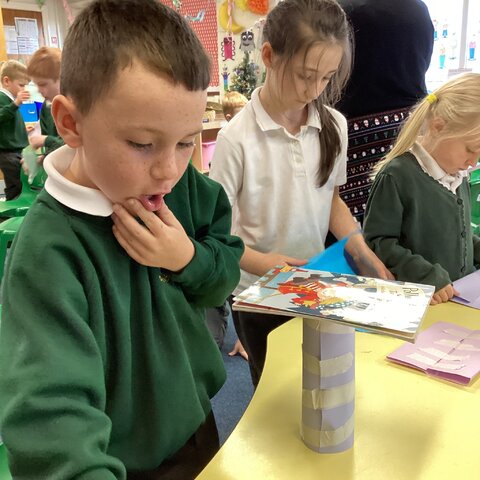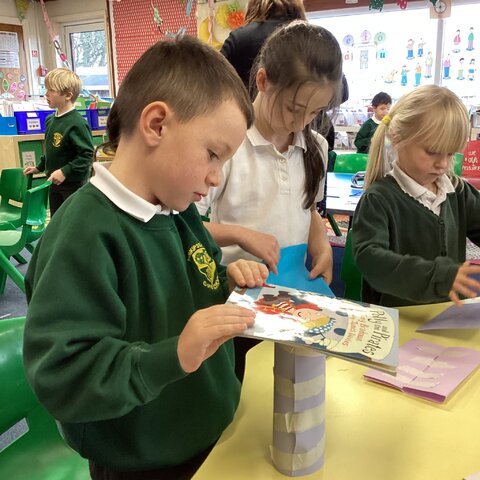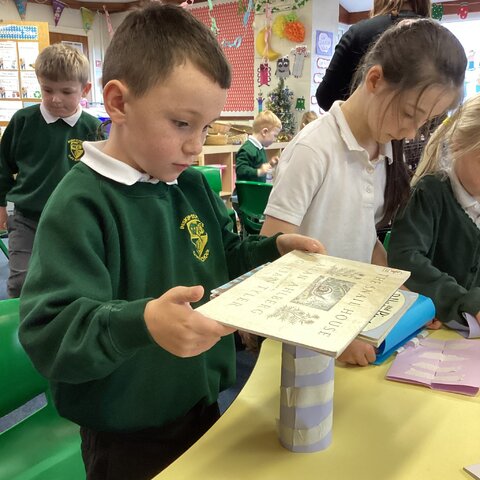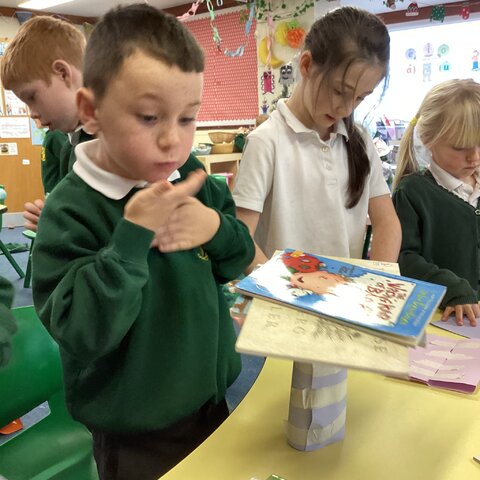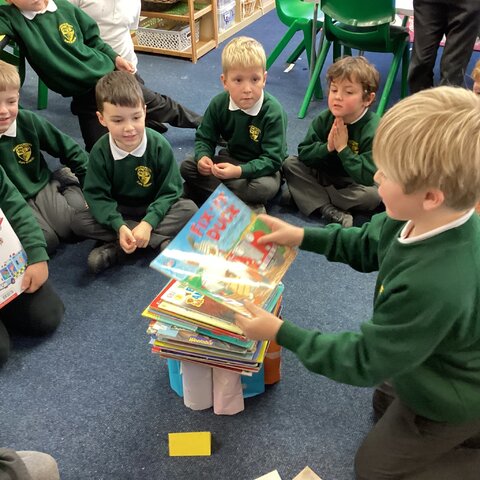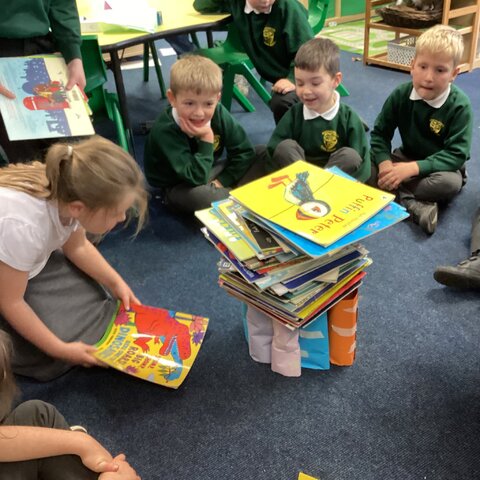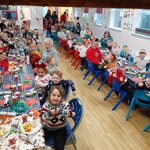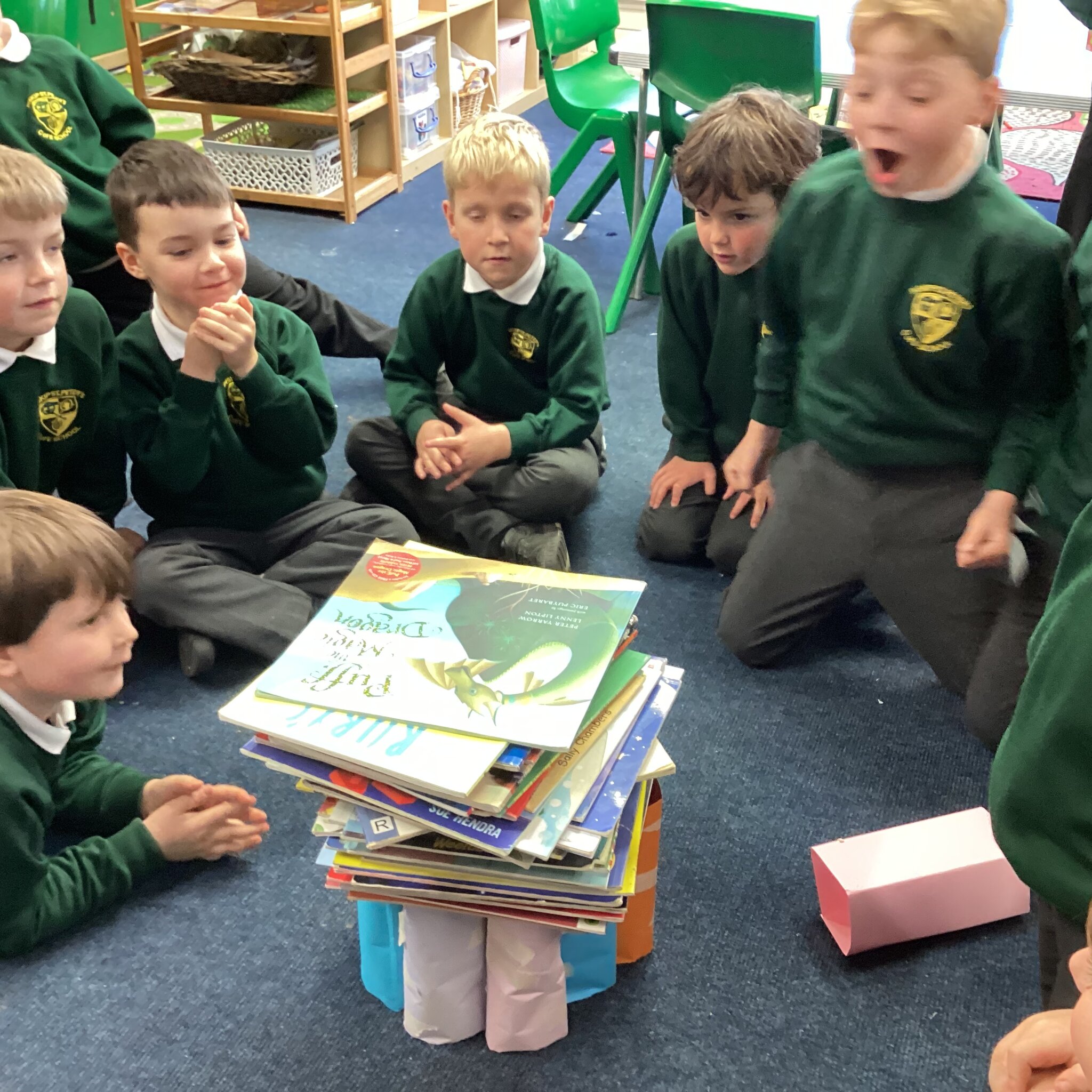
Well, we had a LOT of fun in our second DT lesson this week as the children investigated which shaped structure was the strongest!
I asked the children to think back to Lesson 1 we and discussed the following terms and examples of each:
- Stability – When something is firmly fixed or not likely to change or move, for example, a house, a mountain.
- Strength – Someone that is strong or something that is strong and not easily broken, for example, wood, brick, building.
- Stiffness – A material or object that does not bend easily, for example, metal/a metal pole/climbing frame.
We talked about why these properties are important for structures. (So that the structure is stable, does not fall over/get soggy in the rain/bend or break when used.)
Then I made three different shaped structures a cuboid, a cylinder and a triangular prism out of paper and we tested their strength by placing books on each one in turn. We counted how many books each could hold before collapsing.
I asked these questions and we found …
- Which part of the triangle and square sections are the most crumpled? (One of the corners.)
- Which is the weakest part of the structure? (The corners.)
- Why was the cylinder stronger? (Because it doesn’t have any corners.)
The reason the square and triangle structures are weaker is because they have corners. Corners work really hard and try to support the weight, while the walls between them do very little of the weightlifting. Eventually, the corners buckle under the whole load and collapse. Cylinders are the strongest, simply because they do not have any corners. The whole structure bears the weight evenly and can therefore carry more weight. To improve strength in a structure, simply remove the corners.
Take a look at these photos to see the children making and testing their shapes for strength, I’m afraid I didn’t get too many photos as it was a very hands-on lesson!
.png)
